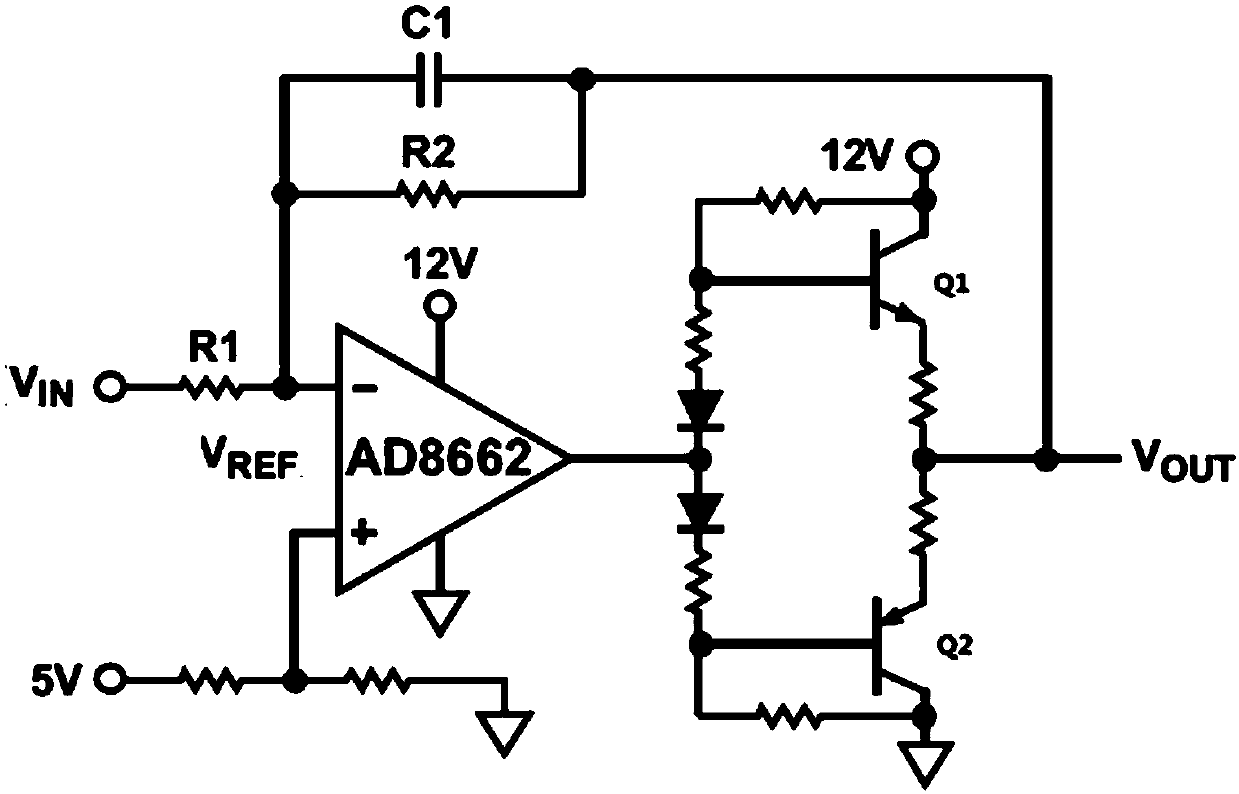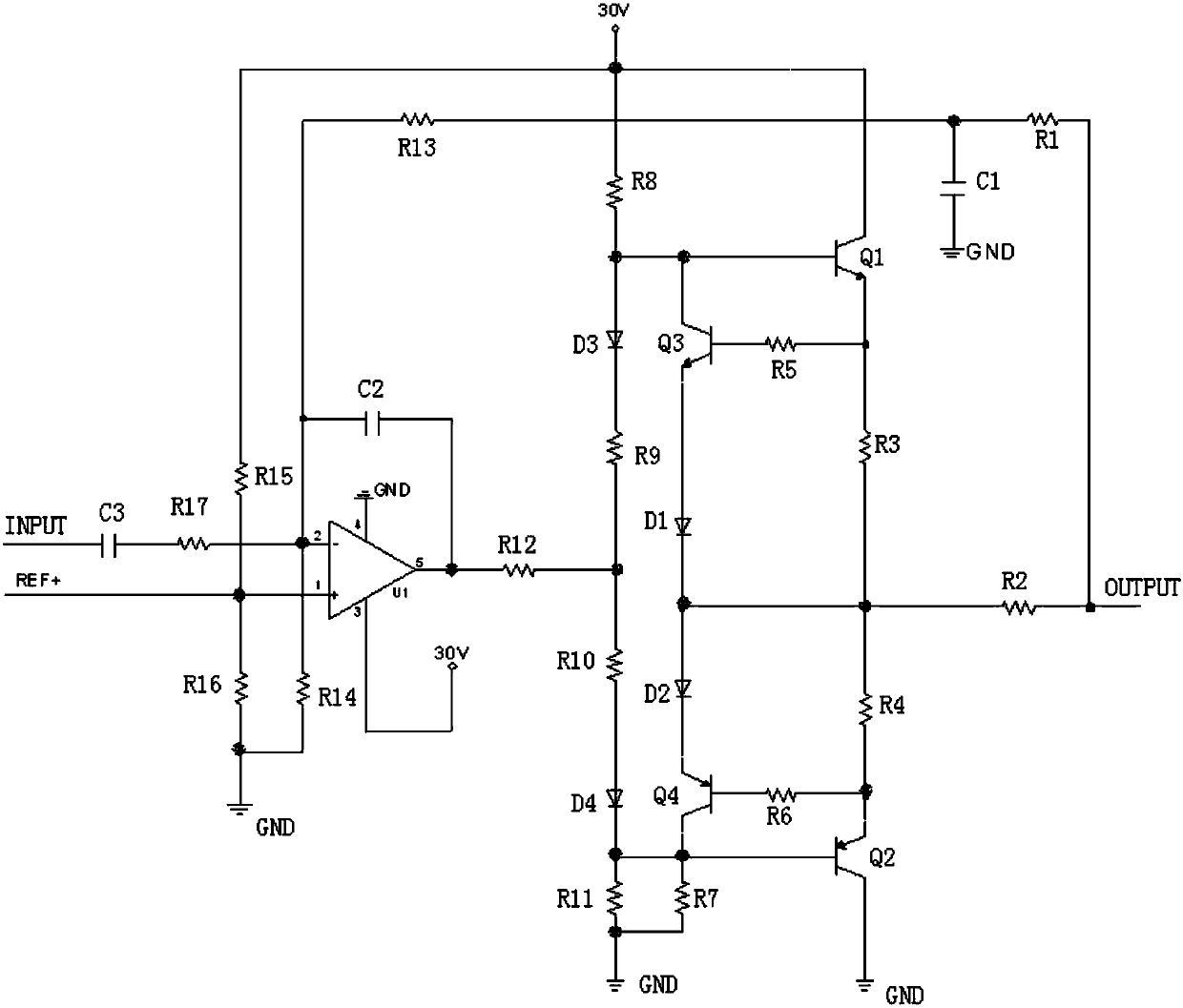Push-pull circuit and gain amplification circuit composed of same
A push-pull circuit and resistance technology, applied in the field of gain amplifying circuit and push-pull circuit, can solve the problems of limited current amplifying capacity, large loss of transistor Q2, large loss of push-pull circuit, etc., and achieve low power supply voltage and heat dissipation design. Simple, low power tube loss effect
- Summary
- Abstract
- Description
- Claims
- Application Information
AI Technical Summary
Problems solved by technology
Method used
Image
Examples
Embodiment Construction
[0093] Such as Figure 4 As shown, the first embodiment of the push-pull circuit of the present invention includes:
[0094] First to fourth transistors Q1-Q4, first to sixth diodes D1-D6, first to second Zener diodes Z1, Z2 and first to sixth resistors R1-R6;
[0095] The emitter of the first triode Q1 is connected to one end of the first resistor R1, the collector of the first triode Q1 is connected to the cathode of the first diode D1, the anode of the first diode D1 is connected to the power supply terminal E, and the first triode Q1 The base is connected to the collector of the third triode Q3 and the cathode of the third diode D3;
[0096] The emitter of the second transistor Q2 is connected to one end of the second resistor R2, the collector of the second transistor Q2 is connected to the anode of the second diode D2, the cathode of the second diode D2 is grounded, and the base of the second transistor Q2 is connected to The collector of the fourth triode Q4 and the a...
PUM
 Login to View More
Login to View More Abstract
Description
Claims
Application Information
 Login to View More
Login to View More - R&D
- Intellectual Property
- Life Sciences
- Materials
- Tech Scout
- Unparalleled Data Quality
- Higher Quality Content
- 60% Fewer Hallucinations
Browse by: Latest US Patents, China's latest patents, Technical Efficacy Thesaurus, Application Domain, Technology Topic, Popular Technical Reports.
© 2025 PatSnap. All rights reserved.Legal|Privacy policy|Modern Slavery Act Transparency Statement|Sitemap|About US| Contact US: help@patsnap.com



